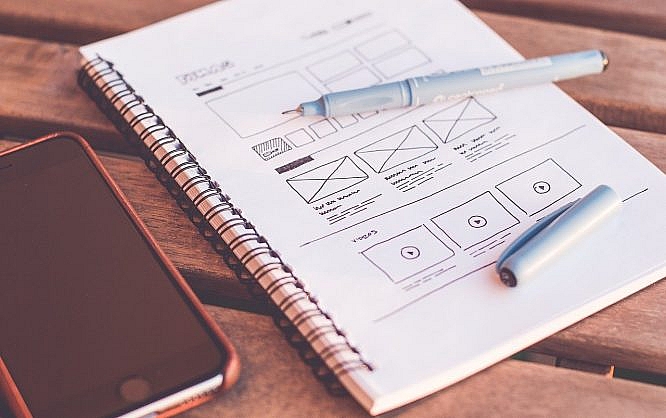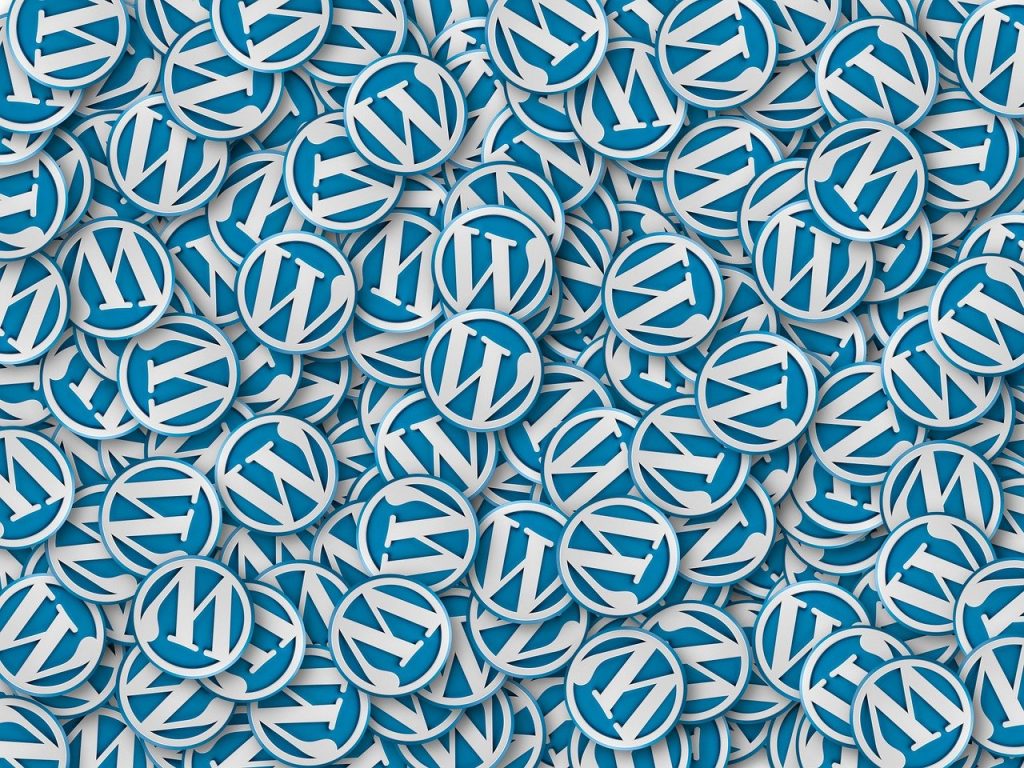Pros and Cons: Design With Templates

"Real" designers will throw their hands up in horror as soon as someone mentions the word "template" or "theme." Let's take a more objective look at the whole thing.
 For WordPress, There is a Vast Amount of Themes. (Photo: Pixabay)[/caption]
People like to argue whether a template or theme has to be made manually, or if a ready-made layout is sufficient. The market answers with its feet. You can buy thousands of templates and themes on the web, and get a lot of free ones too. The market is massive, and so is the demand.
By now, there are not only the notorious handymen that wouldn't even buy the service professionally if they had the money to do so. Even pragmatic designers have discovered the market, and either offer their layouts as templates like work instruction templates, or purchase templates to use for their customers.
[caption id="attachment_102928" align="alignnone" width="1024"]
For WordPress, There is a Vast Amount of Themes. (Photo: Pixabay)[/caption]
People like to argue whether a template or theme has to be made manually, or if a ready-made layout is sufficient. The market answers with its feet. You can buy thousands of templates and themes on the web, and get a lot of free ones too. The market is massive, and so is the demand.
By now, there are not only the notorious handymen that wouldn't even buy the service professionally if they had the money to do so. Even pragmatic designers have discovered the market, and either offer their layouts as templates like work instruction templates, or purchase templates to use for their customers.
[caption id="attachment_102928" align="alignnone" width="1024"] Of Course, the True DIY'er Does Everything Himself. (Image Source: RawPixel.com via Pexels)[/caption]
Let's take a look at the pros and cons of these solutions:
Of Course, the True DIY'er Does Everything Himself. (Image Source: RawPixel.com via Pexels)[/caption]
Let's take a look at the pros and cons of these solutions:
 There's a Long Road From an Empty Paper to a Pretty Design. (Image Source: Pixabay)[/caption]
There's a Long Road From an Empty Paper to a Pretty Design. (Image Source: Pixabay)[/caption]
 You Can Rearrange Them, But in the End, They Are Still the Same Components. (Image Source: Pixabay)[/caption]
You Can Rearrange Them, But in the End, They Are Still the Same Components. (Image Source: Pixabay)[/caption]
Design Templates: a Massive Market
A template, or a theme, how CMS typically call it, is not a negative thing in itself. The opposite is the case, as every website is template based, and every WordPress site needs a theme. Basically, templates or themes, are the layout foundation of every website. [caption id="attachment_102929" align="alignnone" width="1024"] For WordPress, There is a Vast Amount of Themes. (Photo: Pixabay)[/caption]
People like to argue whether a template or theme has to be made manually, or if a ready-made layout is sufficient. The market answers with its feet. You can buy thousands of templates and themes on the web, and get a lot of free ones too. The market is massive, and so is the demand.
By now, there are not only the notorious handymen that wouldn't even buy the service professionally if they had the money to do so. Even pragmatic designers have discovered the market, and either offer their layouts as templates like work instruction templates, or purchase templates to use for their customers.
[caption id="attachment_102928" align="alignnone" width="1024"]
For WordPress, There is a Vast Amount of Themes. (Photo: Pixabay)[/caption]
People like to argue whether a template or theme has to be made manually, or if a ready-made layout is sufficient. The market answers with its feet. You can buy thousands of templates and themes on the web, and get a lot of free ones too. The market is massive, and so is the demand.
By now, there are not only the notorious handymen that wouldn't even buy the service professionally if they had the money to do so. Even pragmatic designers have discovered the market, and either offer their layouts as templates like work instruction templates, or purchase templates to use for their customers.
[caption id="attachment_102928" align="alignnone" width="1024"] Of Course, the True DIY'er Does Everything Himself. (Image Source: RawPixel.com via Pexels)[/caption]
Let's take a look at the pros and cons of these solutions:
Of Course, the True DIY'er Does Everything Himself. (Image Source: RawPixel.com via Pexels)[/caption]
Let's take a look at the pros and cons of these solutions:
Advantage #1: Time Saving
A finished template is - hence the name - finished. You add your own content, like text and media, and go online. This advantage does not only apply to the consumer, as the designer can save time by using finished templates for his clients as well. Take advantage of free graphic design software to save even more time.Advantage #2: Money Saving
No matter which way you look at it, using a ready-made template is cheaper than commissioning a professional designer. The designer also saves money by going for finished themes for his customers. Usually, this allows him to offer services for much lower prices, potentially netting commissions that he would not have gotten at higher prices.Advantage #3: Faster Selection
Templates will give customers with few own design ideas a much easier time. After all, they get to see options right away. The human is a visual being and can make decisions faster if he can see his options. The designer can make use of this advantage as well. He could show a selection of different templates to his customers, getting a tuned layout decision right away. This lowers the designer's effort.Advantage #4: Meaningfully Equipped
Of course, professional designers will make sure that a website has the required functionality, which means that it contains things like a contact form, for instance. DIY'ers could easily forget these things. Usually, a finished template was made considering all essential components. Thus, the handyman receives a complete frame, ready for him to fill it with content.Advantage #5: Faster Switching
There's another benefit, made up from the sum of the above-mentioned ones. The design of a template based website can easily be switched to a new one. You probably won't want to give up an expensive custom design after a couple of years, because it still hurts too much. Presuming you didn't have someone bend the template until it looks like a new creation. [caption id="attachment_102927" align="alignnone" width="1024"] There's a Long Road From an Empty Paper to a Pretty Design. (Image Source: Pixabay)[/caption]
There's a Long Road From an Empty Paper to a Pretty Design. (Image Source: Pixabay)[/caption]
Disadvantage #1: Uniformity
Usually, a finished template is so cheap because it is supposed to sell hundreds of times. Template designers also make sure to get as close to the taste of the masses as possible. That's why templates tend to be very conformable. If you value uniqueness, finished templates are an abysmal choice. Sure, you can bend any template's design around. However, that takes away all of the advantages as mentioned above.Disadvantage #2: Code Quality and Sustainability
We have to be honest here. The code quality of a majority of available themes and templates is very lacking. If you are a DIY'er that want to get a website online fast, without any knowledge of HTML and CSS, you can quickly fall flat on your face. After all, web design is no longer a simple question of looks. Search engine optimization, loading performance, and security have to be considered as well. Thus, you should definitely acquire some essential knowledge before choosing a template. The designer easily avoids this problem, thanks to his extensive expertise. You should also try to figure out how the selected template or theme is taken care of. Does the provider update his product regularly, or at least when needed, for example when security issues became evident, or will you be left alone after your purchase? In the latter case, you should stay away from that. [caption id="attachment_102926" align="alignnone" width="1024"] You Can Rearrange Them, But in the End, They Are Still the Same Components. (Image Source: Pixabay)[/caption]
You Can Rearrange Them, But in the End, They Are Still the Same Components. (Image Source: Pixabay)[/caption]

Thanks, very helpful